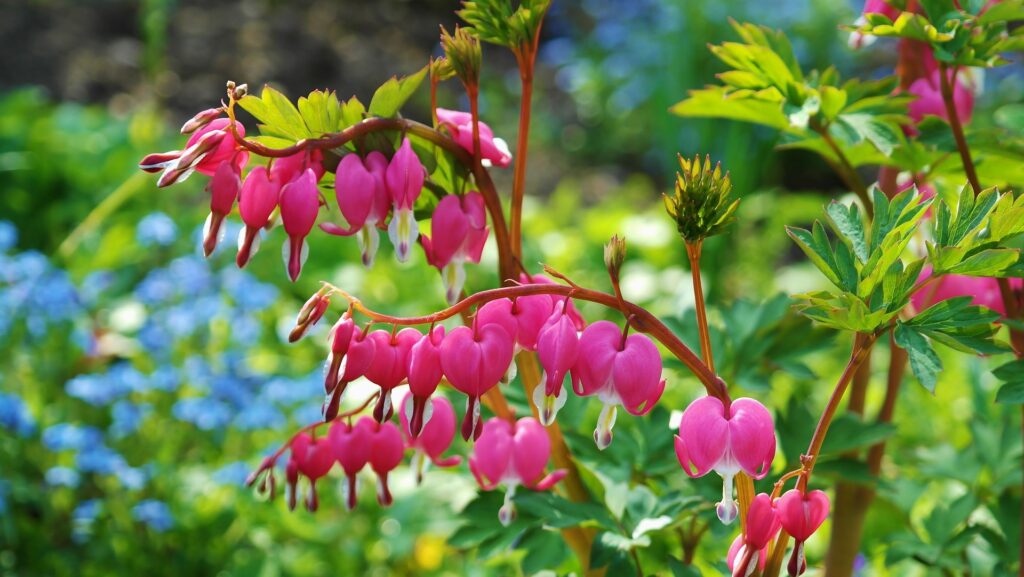The Tangled Heart Plant: An Easy-Care Addition to Any Home
The tangled heart plant, also known as Ceropegia linearis subsp. woodii, is a species of flowering plant native to South Africa.The plant belongs to the Apocynaceae family, a group of plants that includes milkweeds and oleanders.


The tangled heart plant is a unique-looking plant that is easily recognized by its long, tangled stems and heart-shaped leaves. Plant is characterized by its heart-shaped leaves, which are typically green in color and can grow up to 6 inches in length. The plant produces small, purple or white flowers that are hidden among its tangled stems.
Caring for the tangled heart plant is simple and it can be grown indoors or outdoors in warm climates. It thrives in bright, indirect light and well-draining soil. It is also drought-tolerant, making it a good choice for those who do not want to water their plants frequently.
In addition to its attractive appearance, the tangled heart plant is also known for its unique growth habit. As it grows, its stems will twist and turn, forming intricate patterns that are reminiscent of a tangled heart. This makes it a popular plant among those who enjoy unusual and exotic-looking plants.
Attractive plant
The tangled heart plant, or Ceropegia linearis subsp. woodii, is a unique and attractive plant that is easy to care for and adds a touch of interest to any space. Some of the facilities and benefits of this plant include:
- Unique appearance: The tangled heart plant is easily recognized by its long, tangled stems and heart-shaped leaves. Its stems will twist and turn as it grows, forming intricate patterns that are reminiscent of a tangled heart. This makes it a popular plant among those who enjoy unusual and exotic-looking plants.
- Easy to care for: The tangled heart plant is easy to care for and can be grown indoors or outdoors in warm climates. It prefers bright, indirect light and well-draining soil. It is also drought-tolerant, making it a good choice for those who do not want to water their plants frequently.
- Air purification: Like many other plants, the tangled heart plant can help to purify the air by removing harmful pollutants from the air. This can improve the air quality in your home or office, and may have health benefits for those who suffer from allergies or asthma.
- Stress-reducing: Many people find that caring for plants can be a relaxing and therapeutic activity. The tangled heart plant is no exception, and tending to it can help to reduce stress and promote feelings of calm and well-being.
- Decorative: In addition to its unique appearance, the tangled heart plant is also an attractive plant that can add a touch of greenery and interest to any space. It can be grown in a pot or container and placed on a windowsill, table, or shelf, making it a versatile plant that can be enjoyed in any setting.
How To Care For Tangled Heart
- Provide bright, indirect light: The tangled heart plant prefers bright, indirect light and will thrive in a location that receives plenty of sunlight without being in direct sunlight. Avoid placing the plant in a location that receives direct sunlight, as this can cause the leaves to scorch or fade.
- Keep the soil moist: To keep the tangled heart plant healthy, it is important to maintain moist but not soggy soil. Overwatering can kill a plant’s roots, so you should only water it when the top inch of soil feels dry. The tangled heart plant prefers well-draining soil, so be sure to use a pot with drainage holes and avoid letting the plant sit in water for extended periods of time.
- Prune the stems: As the tangled heart plant grows, its stems will twist and turn, forming intricate patterns. To maintain the plant’s shape and encourage new growth, prune the stems as needed, cutting them back to the desired length with clean, sharp scissors.
- Fertilize during the growing season: To help the tangled heart plant thrive, fertilize it during the growing season with a balanced liquid fertilizer diluted to half-strength. Apply the fertilizer every two weeks according to the manufacturer’s instructions.
- Protect from extreme temperatures: The tangled heart plant is not cold-hardy and should be protected from extreme temperatures. Avoid placing the plant outdoors in temperatures below 50 degrees Fahrenheit, and keep it away from drafts, radiators, and other sources of heat or cold.
How I grow Tangled heart plant
To grow a tangled heart plant, or Ceropegia linearis subsp. woodii, follow these steps:
- Choose a location with bright, indirect light. The tangled heart plant prefers bright, indirect light and will thrive in a location that receives plenty of sunlight without being in direct sunlight. Avoid placing the plant in a location that receives direct sunlight, as this can cause the leaves to scorch or fade.
- Select a well-draining pot or container. The tangled heart plant prefers well-draining soil, so choose a pot or container with drainage holes to prevent the roots from sitting in water.
- Fill the pot with a well-draining potting mix. Use a potting mix specifically designed for cacti and succulents, or mix your own by combining equal parts potting soil, perlite, and sand.
- Plant the tangled heart plant in the pot. Gently remove the plant from its current pot and place it in the center of the new pot. Fill in around the plant with the potting mix, making sure to leave enough space for the roots to spread.
- Water the plant thoroughly. After planting, water the tangled heart plant thoroughly to moisten the potting mix. Avoid overwatering, which can cause the roots to rot.
- Provide bright, indirect light and regular watering. Keep the tangled heart plant in a location that receives plenty of bright, indirect light, and water it when the top inch of soil feels dry to the touch. Avoid overwatering and avoid placing the plant in direct sunlight.
- Prune the stems as needed. As the tangled heart plant grows, its stems will twist and turn, forming intricate patterns. To maintain the plant’s shape and encourage new growth, prune the stems as needed, cutting them back to the desired length with clean, sharp scissors.
Is Broken Heart plant good for home?
The broken heart plant, also known as the Ceropegia woodii, is a popular houseplant that is known for its unique appearance and easy-care requirements. Its long, tangled stems and heart-shaped leaves make it a standout among other plants, and its ability to tolerate low light conditions and infrequent watering make it a good choice for those who want to add a bit of greenery to their home. In addition, the broken heart plant is known for its air-purifying abilities, and has been shown to remove harmful pollutants from the air, making it a good choice for those who are concerned about air quality. Overall, the broken heart plant is a good choice for those who want to add a unique and attractive plant to their home.
Overall, the tangled heart plant is a unique and attractive plant that is easy to care for and adds a touch of interest to any space. It is a good choice for those who want to add a bit of whimsy to their home or garden.

